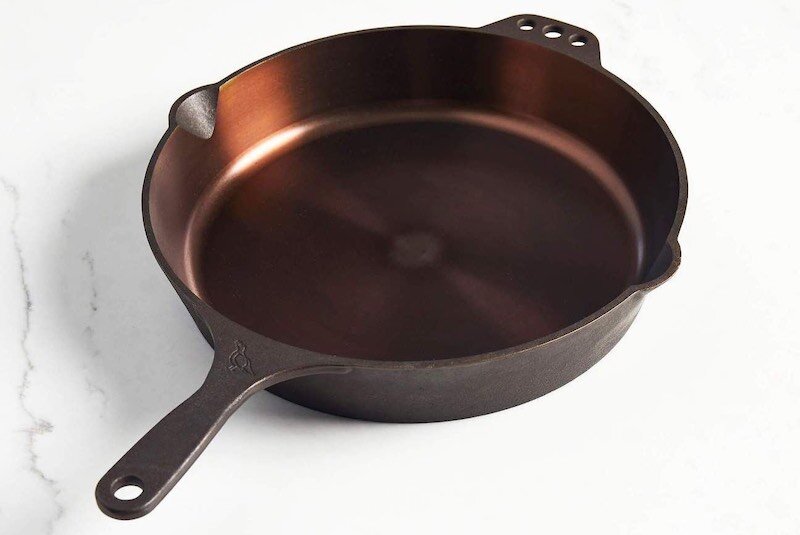Cast Iron Skillet: The Little Black Dress of your Kitchen
Classic, long-lasting, versatile, affordable, accessible, inheritable. Every woman has or should have one. A little black dress? Nope. I’m talking about a cast iron skillet.A great fitting little black dress can be dressed up with statement accessories or dressed down with a blazer and cute sneaks. A well-seasoned cast iron skillet can work as a griddle for french toast and eggs, a deep fat fryer, a roasting pan for chicken, a pizza stone, or a super-hot saute pan. You can use your cast iron on the stove and in the oven. It is naturally nonstick (more on how to season your pan below) and, unlike coated nonstick pans, cast iron withstands super high temps and distributes heat evenly, so you always wind up with perfectly crispy meats and exceptionally charred veggies. If I could only choose one cooking tool to use forever, it would be a cast iron. A well-made cast iron skillet is incredibly affordable, is the most versatile of vessels, and if properly cared for, will last you a lifetime. While you can find many fancy, enamel lined cast iron pans out there, I’m a personal fan of simple and classic Lodge brand, which will set you back a whopping $25. 
 Photo credit: Apartment Therapy
Photo credit: Apartment Therapy
The number one reason that precludes most users from taking the plunge into using cast iron is the need to season the pan when it is either old and rusty or new and sticky. The process honestly is so simple. If you want to season a cast iron pan, apply a thin layer of neutral, high smoke point oil like vegetable, canola, or grapeseed across the surface and bake at 400˚F for one hour. Avoid using rendered animal fat or olive oil though, as they may go rancid. If you're concerned about oil pooling inside the pan while it's seasoning, place the pan inside your oven upside down with a sheet pan underneath to catch any runoff. After the initial seasoning, regular use will also help to keep a pan seasoned.  When I wear my LBD, I drop it at the dry cleaners until I’m ready to bust it out again. Similarly, a cast iron skillet is the most low-maintenance kitchen tool you can add to your arsenal. You don’t really need all that much beyond a basic understanding of how to care for it.
When I wear my LBD, I drop it at the dry cleaners until I’m ready to bust it out again. Similarly, a cast iron skillet is the most low-maintenance kitchen tool you can add to your arsenal. You don’t really need all that much beyond a basic understanding of how to care for it.
Clean the skillet immediately after use, while it is still hot or warm. Don’t soak the pan or leave it in the sink because it may rust. I always dump kosher salt into the pan, add a few tablespoons of water to create a paste and then wipe that with a paper towel. After, simply wash the skillet by hand using hot water and a sponge or stiff brush. Avoid using the dishwasher, soap, or steel wool, as these may strip the pan’s seasoning. After the pan is clean, thoroughly towel dry or dry it on the stove over low heat. After it is fully dry, using a cloth or paper towel, apply a light coat of vegetable oil or melted shortening to the inside of the skillet. Done and done.
Basically, it's the best, and if you don't already own one, you should seriously consider getting one ASAP.

